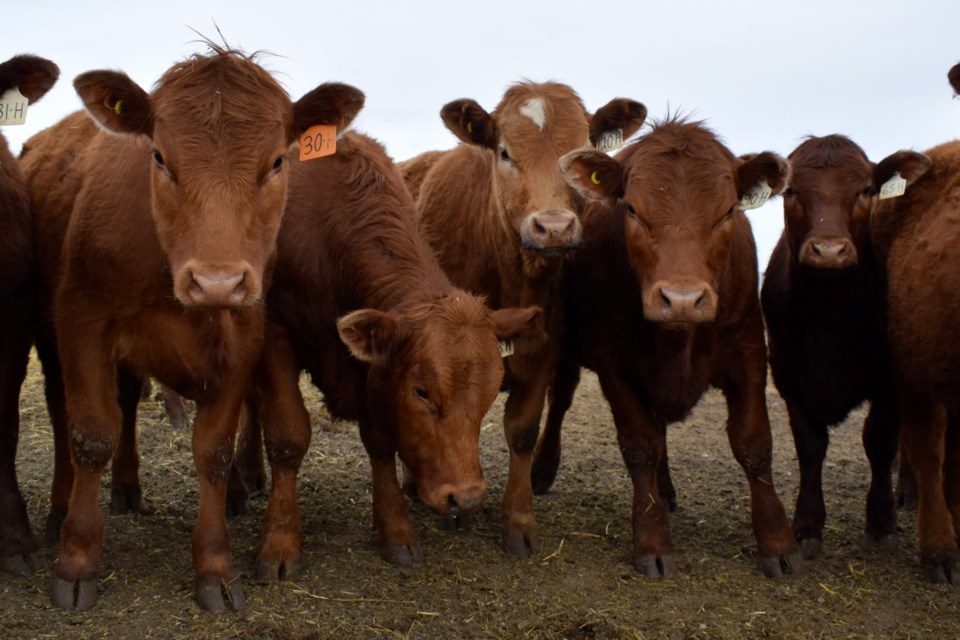OTTAWA — Minister of Agriculture and Agri-Food Lawrence MacAulay has announced an initial list of designated regions in British Columbia, Alberta, Saskatchewan and Manitoba where Livestock Tax Deferral has been authorized for 2023 due to extreme weather conditions.
The Government of Canada recognizes the significant challenges livestock producers in Western Canada are facing due to exceptionally dry conditions, according to a press release. Compounded by subsequent years of drought, pastures and forage production are significantly impacted, leading to low feed supplies for livestock.
The federal government has also worked with the governments of British Columbia, Alberta and Saskatchewan on joint AgriRecovery assessments to examine the impacts of the drought and wildfires. Work with provinces is progressing to finalize the AgriRecovery process and to determine any additional support required to cover the extraordinary costs incurred by producers.
The Livestock Tax Deferral provision allows livestock producers who are forced to sell all or part of their breeding herd due to drought or excess moisture to defer a portion of their income from sales until the following tax year. The income may be at least partially offset by the cost of reacquiring breeding animals, thus reducing the tax burden associated with the original sale.
Eligible areas in Saskatchewan include the RMs of Arlington No. 79; Auvergne No. 76; Battle River No. 438; Big Stick No. 141; Biggar No. 347; Blucher No. 343; Bone Creek No. 108; Britannia No. 502; Buffalo No. 409; Canaan No. 225; Carmichael No. 109; Chaplin No. 164; Chesterfield No. 261; Clinworth No. 230; Corman Park No. 344; Coteau No. 255; Coulee No. 136; Cut Knife No. 439;
Deer Forks No. 232; Douglas No. 436; Dundurn No. 314; Eagle Creek No. 376; Eldon No. 471; Enfield No. 194; Enterprise No. 142; Excelsior No. 166; Eye Hill No. 382; Fertile Valley No. 285; Fox Valley No. 171;Frontier No. 19;
Glen Bain No. 105; Glenside No. 377; Grandview No. 349; Grass Lake No. 381; Grassy Creek No. 78; Great Bend No. 405; Gull Lake No. 139; Happyland No. 231; Hillsdale No. 440; Kindersley No. 290; King George No. 256
Lac Pelletier No. 107; Lacadena No. 228; Lawtonia No. 135; Lone Tree No. 18; Loreburn No. 254; Lost River No. 313; Manitou Lake No. 442; Maple Bush No. 224; Maple Creek No. 111; Mariposa No. 350; Marriott No. 317; Mayfield No. 406; McCraney No. 282; Milden No. 286; Milton No. 292; Miry Creek No. 229; Monet No. 257; Montrose No. 315; Morse No. 165; Mountain View No. 318
Newcombe No. 260; North Battleford No. 437; Oakdale No. 320; Paynton No. 470; Perdue No. 346; Piapot No. 110; Pittville No. 169; Pleasant Valley No. 288; Prairiedale No. 321; Progress No. 351; Redberry No. 435; Reford No. 379; Reno No. 51; Riverside No. 168; Rosedale No. 283; Rosemount No. 378; Round Valley No. 410; Rudy No. 284;
Saskatchewan Landing No. 167; Saskatoon; Senlac No. 411; Snipe Lake No. 259; St. Andrews No. 287; Swift Current No. 137; Tramping Lake No. 380; Vanscoy No. 345; Victory No. 226; Webb No. 138; Whiska Creek No. 106; White Valley No. 49; Willner No. 253; Wilton No. 472; Winslow No. 319; and Wise Creek No. 77.
As a preliminary list of prescribed drought and flood regions is usually completed in the early fall, designation of this provision earlier in the year helps provide assurance for producers as they make difficult herd management decisions. The Government of Canada will continue to monitor conditions across the country and will add other regions throughout the year if they meet the criteria.
Producers have access to a comprehensive suite of business risk management (BRM) programs that are the first line of defense for producers facing disasters, including AgriStability, AgriInsurance and AgriInvest. The government has already supported requests from British Columbia and Alberta for late participation in AgriStability, as well as requests from British Columbia and Saskatchewan to increase the interim payment rate under AgriStability from 50 per cent to 75 per cent. Minister MacAulay also highlighted federal support for British Columbia, Alberta and Saskatchewan to make a one-year adjustment to the AgriInsurance program to make more drought-damaged crops available for feed. This increases the amount of crops available for livestock producers in this time of need.
You can no longer count on social media to deliver important news to you. Keep your news a touch away by bookmarking SASKTODAY.ca's homepage at this link.
Here's why you should bookmark your favourites.
Subscribe to SASKTODAY.ca newsletter to get our daily news to your inbox.




